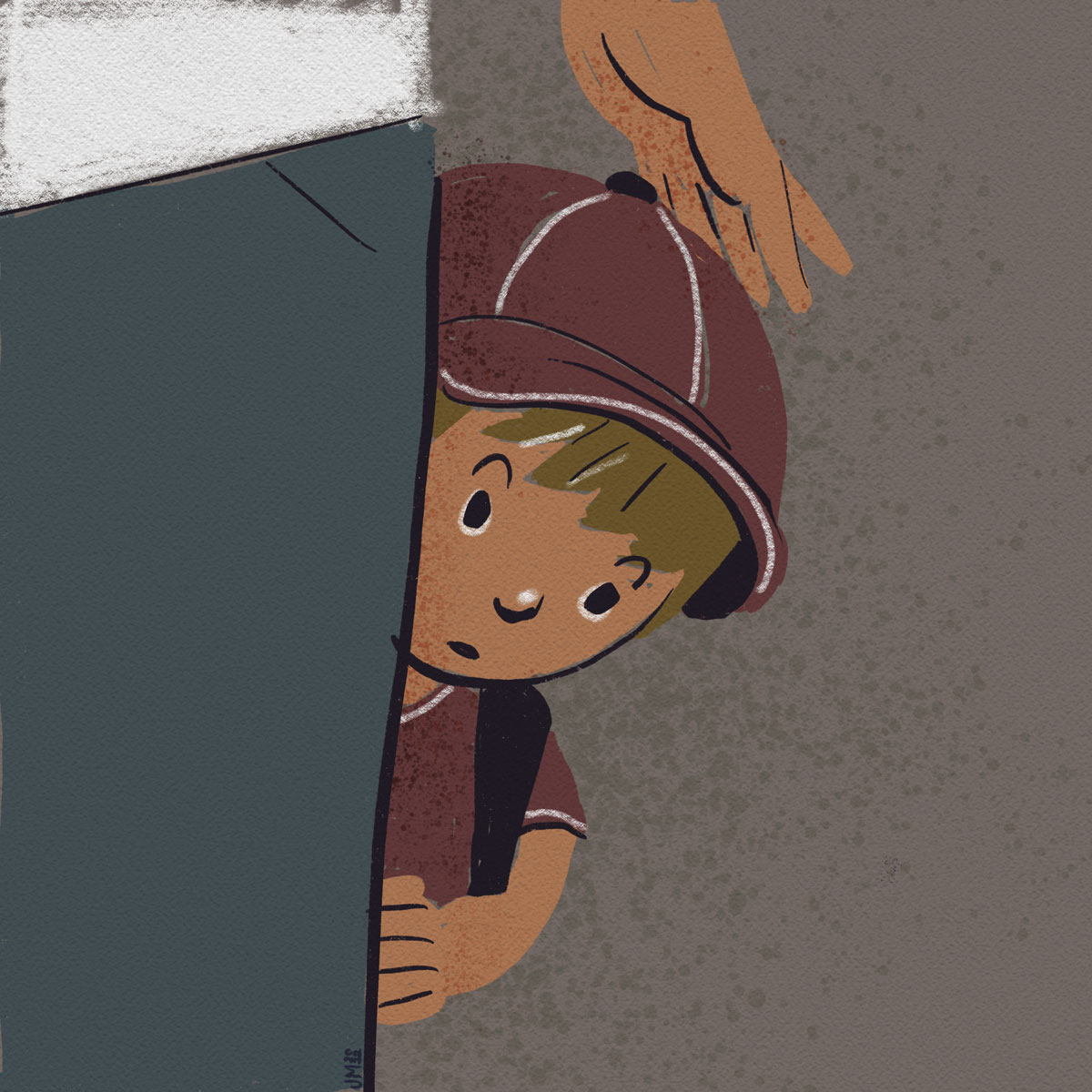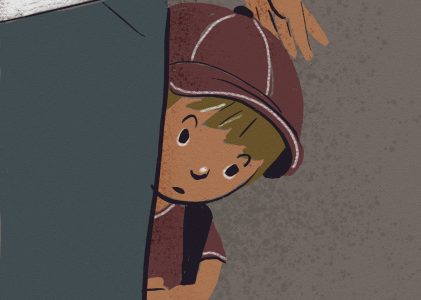Connect with them and explore their fears.
Your child looks outside and sees kids playing in the yard next door. She really wants to join them but feels paralyzed by fear – what if they reject her? She cries, “I want to play, but I’m too scared!”
Her anguish hits you in the chest as conflicting thoughts whirl through your mind. You want to tell her, “Just go out there, it’s no big deal!” You want to hug her and make it better. Maybe you want to recoil from this reflection of how you felt as a child—did she get her anxiety from you?
In the moment, it’s hard to think of the right thing to say. You might feel uncertain about how to empathize with your child without encouraging their fear. If your child’s fear seems silly or absurd, you might feel tempted to minimize their fear or tell them to forget about it. Resist that urge. No matter what your child is worried about, their feelings are real and deserve respect. Here are some techniques to validate your child’s experience and help them cope with anxiety.

How to help your child manage anxiety
What to say (and do)
“I’m here. You are safe.”
This is the most essential message to convey to your child when they’re upset. Anxiety makes your child feel as if they’re in danger. Repeating that they’re safe and not alone may soothe them.
“I’m going to take a deep breath.”
Model a coping strategy like deep belly breathing to help them calm down. There are lots of breathing exercises, but here are some simple ones:
- Breathe in through the nose and out through the mouth.
- Breathe in for three, hold for three, and breathe out for three.
If your child is young and resistant to breathing exercises, you can lighten the mood by having them:
- Blow into a pinwheel
- Blow bubbles
- Slowly blow out “candles” on your fingertips
- Compete in a whistling or kazoo contest
For more breathing exercises to practice with younger children, this pdf from Childhood101 has some fun and useful ideas like Back to Back Breathing, Balloon Breathing, and Bumblebee Breathing.
“Tell me about it.”
Let your child talk freely and don’t interrupt. Talking through thoughts helps children process them. Give them space to do this without offering solutions.
After they’ve talked it through, reflect on what you’ve heard them say and check in with them about it. For example, “It sounds like you really want to play with those kids and you’re afraid they might not want to play with you. Does that sound right?”
Help them think critically about their assumptions. “What makes you think they won’t want to play with you?” “Has that happened before?”
“What’s the worst thing that could happen?”
Once your child has articulated the worst possible outcome, ask them how likely that is to happen.
Next ask, “What’s the best thing that could happen?”
If you want to giggle with them a bit ask, “What’s the most ridiculous thing that could happen?”
Finally ask, “What’s the most likely thing that could happen?” Help them think of a realistic and helpful outcome.
“What could you do to (make this easier, make yourself feel better, etc.)?”
Brainstorm ideas with your child to help them make a plan. Using the previous example, “You’ve decided that you can go outside and sit on the front steps. If any of the kids notice you, you can wave and say hello. If they smile or seem nice, you might even ask if you can play, too…”
“It’s scary AND (you have a plan, you’ve conquered this before).”
Acknowledge your child’s fear and encourage them to work through it. This models for them a mantra that they can repeat when they feel worried.
“Can you draw it?”
Talking about emotions can be difficult, especially for young children. If your child struggles to talk about their worries, ask them to draw, paint or create their worries on paper. When they’re finished, reflect on what they’ve drawn and give them space to explain what it means: “You used a lot of red!”
“If your worry was a monster, what would it look like?”
Help your child think of their worry as a character that they can talk back to. Once they describe their worry monster, ask them to name it. This helps your child to detach from anxious thoughts and see their worries as something they can reject or manage.
“Let’s put your worry on the shelf while we (run around the block, listen to your favorite song, or read a story). Then we’ll pick it back up again.”
People who struggle with anxiety often feel they must keep worrying until the thing they’re worried about is over. Teach your child that they can take a break from worrying. Show them that setting aside their worries to do something fun can help put their worries into perspective.
“I can’t wait to hear about ____.”
Help your child think beyond the dreaded event, and let them know you’ll be there to support them no matter what happens.
“What do you need from me?”
Instead of making assumptions, ask them directly. It could be a hug, some space or a solution.
Next Steps
We hope these tips help you manage your child’s anxiety. If your child consistently struggles with anxiety that keeps them from doing things they need or want to do, they might benefit from working with a mental health professional. A trained and licensed therapist can help them develop coping skills and other tools to manage anxiety and live a happier, healthier life.
If you or someone you love would benefit from talking to a mental health provider in Tennessee, contact Athena Care.
One of our Care Coordinators will help you get the care you need.

Rachel Swan, MS
Editor
Rachel has a Masters of Science in Clinical Psychology from Vanderbilt University, where she spent 16 years as a Research Analyst in the Psychology and Human Development Department.


